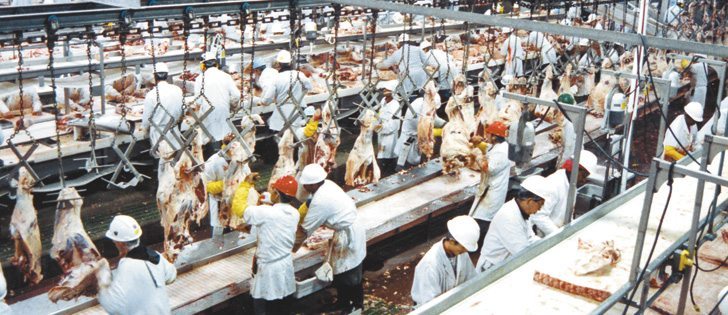DRESDEN, Ont. – Ontario pork industry leaders are urged to consider a British model as they look for a way out of the hog price crisis.
Steve Thomas, who now works as an animal health products representative in Ontario, sat on the National Pork Association’s (NPA) allied industry committee in the United Kingdom as it helped reinvent the British industry a decade ago. He says the British answer was to introduce a voluntary Quality Standard Mark (QSM) system for producers, processors and retailers and an aggressive campaign to raise consumer awareness.
Read Also

Saskatchewan dairy farm breeds international champion
A Saskatchewan bred cow made history at the 2025 World Dairy Expo in Madison, Wisconsin, when she was named grand champion in the five-year-old Holstein class.
“I’ve been in Canada for 21/2 years. The ball’s been on the floor for 21/2 years and no one has picked it up,” he said.
“We need to get ourselves geared up for next June, July and August to make sure we don’t go through this again …. Ontario has a lot to offer, hog-wise. What we have to do is get our act together.”
Today, 85 percent of British hogs are produced and marketed under the QSM system. Seventy percent of the fresh pork and 25 percent of the bacon in British supermarkets carry the QSM label.
Minimum standards related to production, transport and processing are attached to the QSM designation. Consumers are also assured they are buying products raised and processed in the U.K.
British pork sales also take a tiered approach. Commodity pork is at the bottom end of the price range, most likely imported.
Higher-priced pork generally carries the QSM, either alone or in combination with other branding programs.
Thomas said producers and processors typically enter into contracts that may include a floor price and price cap that take into account the cost of production.
Moving from an industry in meltdown wasn’t simple, and Thomas said the alliance among the three industry sectors – producers, processors and retailers – has required dialogue and communication.
British situation
Ian Campbell, who also sat on the committee that ushered in QSM and retired from the NPA a year ago, said the story began in the mid-1990s.
British producers were competing against efficient players in other European Union countries who had a distinct advantage. Unlike in the U.K., they had not been forced to move to high-welfare housing systems because of the stall and tether ban.
The retail sector initially promised to pay a higher price for pork raised under high-welfare conditions, but deals were cancelled when the pound strengthened against other EU currencies. Many retailers looked outside the U.K. for less expensive pork.
“There was a moral issue with the retailers,” Campbell said.
“We felt very strongly we were led down the garden path with the idea they would support high welfare production.”
He said the processor to which he was selling pigs wouldn’t renew the contract, and his farmgate price fell by more than half.
“For pork businesses, this was an absolute disaster.”
He said the organizations representing pork producers were not especially effective in responding to the situation and the government appeared content to let producers go out of business.
“Politicians basically want a cheap food policy; it helps keep inflation down and it helps keep them in power.”
By the late 1990s, hog farmers were getting desperate and a push from the grassroots led to organized protests and other initiatives intended to draw attention to the situation.
Actions included delaying trucks carrying imported pork from leaving the docks and housing a sow across from Parliament in London for three months.
“We were not important,” Campbell said.
“In other words, the government was relatively comfortable with importing food. We tried to make ourselves important.”
He said the NPA was formed in 1999 as a lobby organization affiliated with the National Farmers Union. It’s closely associated with British Pork Executive, which handles promotion and marketing.
With consumer and industry pressure mounting, the government approved a program that provided support for producers carrying on and those exiting the industry.
The British industry shrank to 400,000 sows from more than 700,000. Numbers have since increased but not to previous highs. Prices have been climbing since 2002, and British prices were significantly higher than the EU average for most of 2007 and 2008.
In Ontario, Thomas sees positive developments in the area of private label branding but feels there’s a need for an Ontario brand with verified standards for producers, truckers and processors.
Many in the industry are doing a good job, he added, but there’s room for improvement. He said the North American industry also needs to downsize in an orderly fashion.
There are a number of significant differences between the British and Ontario situations.
Six major retailers and several other significant players operate in the U.K. compared to two or three main players in Ontario.
As well, the U.K. operates under the umbrella of the EU, which imposes a tariff regime for imports entering the trading region.














